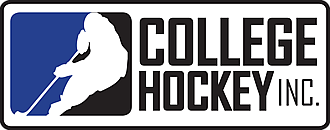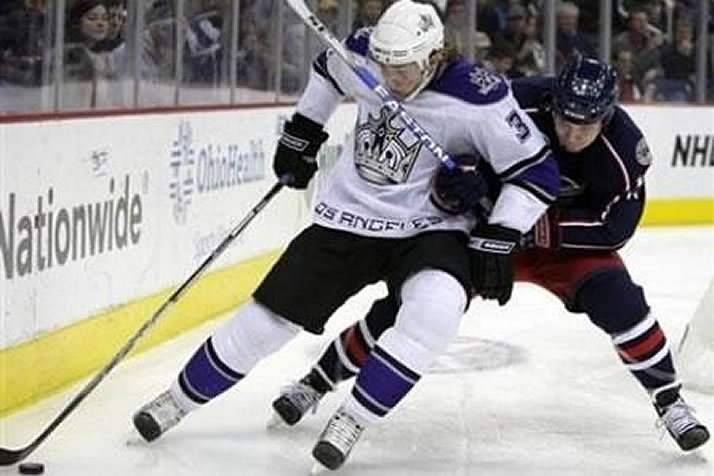


By Kevin Allen, USA TODAY
The NHL, once resistant to having an abundance of former college hockey players, could soon reach the point where one of three players has an NCAA background.
According to the NHL, 225 of the 789 players (28.5%) who have played at least one game this season are former college players. That doesn't include New York Islanders regular Kyle Okposo, a former University of Minnesota player who has been hurt all season.
"I think you are going see that number hitting at least 35% in the next few years," said Paul Kelly, executive director of College Hockey Inc., a marketing arm for the sport.
The primary feeder system has always been Canadian junior hockey, which best mimics the NHL's style of play and schedule length. That program continues to produce many top NHL stars, including Steven Stamkos, Sidney Crosby and Drew Doughty.
But Central Collegiate Hockey Association Commissioner Tom Anastos said it's not unthinkable that the college player representation in the NHL could grow beyond 35%
"I wouldn't be surprised that someday that we would see 35% to 40% of NHL players coming out of our system," Anastos said. "I don't know if it would take another 10 or 15 years, but the number is going to continue to grow."
Kelly says the loss of Russian players to the Kontinental Hockey League and the reduced number of quality players coming out of Slovakia and the Czech Republic are contributing to college hockey's rising stature.
Over the past three years, 34.6% (218 of 630) of all draft picks were college players or players who had committed to play college hockey. NHL teams own the rights to about 200 players still in college.
"The number of signings of college free agents has also trended upward over the last few years," Kelly said. "The late bloomers ? Tyler Bozak, Christian Hanson, Casey Wellman, kids that weren't drafted at age 18."
Kelly says 20 to 25 NHL scouts usually are at Merrimack College games to look at undrafted center Stephane Da Costa.
"I think - college hockey has become more of a realistic option if you have dreams of playing in the NHL," said Los Angeles Kings defenseman Jack Johnson, who played for Michigan. "There are more college programs becoming more competitive across the country. It's not just a select few."
The NHL outlook has come a long way from the 1980s, when college players would arrive at training camps knowing they had more to prove than Canadian juniors.
"It was just a harder climb up the hill if you were from college," said former NHL player Tom Laidlaw, who went from Northern Michigan to the New York Rangers in 1980.
Laidlaw said college players back then had to prove they were willing to fight through injuries and would battle for their teammates.
"I was Canadian so it was a bit easier," Laidlaw said. "It was worse to be an American college player back then because the perception was that an American hadn't lived the game like a Canadian had."
St. Louis Blues defenseman Erik Johnson, who played college hockey at Minnesota, said the indication of change to him is that a lot more Canadians are starting to go to college.
"The only downside is that college doesn't let you go to NHL training camps," Johnson said. "If college would let you go and try out for the pro teams, it would be a more ideal destination for more players."
Canadian juniors continue to be the biggest pipeline to the NHL, claiming 50% of picks in the last three drafts. But as Nashville Predators general manager David Poile said, "We will and do go anywhere to find players."
"Junior is still very good," he said. "But college hockey is very good. European hockey is very good. We have players now from Denmark, and Anze Kopitar is Slovenian."
The college influence has even climbed into management ranks. Ten NHL general managers hold college backgrounds.
"Our development system is as good as there is in the world right now," Anastos said.
By the numbers
A breakdown of college representation among NHL players. The list of colleges on the left includes anyone who has played one NHL game this season. The list of teams on the right includes active players and those on the injured list.
| College |
Players
|
Team |
Players
|
|
| Wisconsin |
18
|
Colorado |
11
|
|
| Boston College |
17
|
Los Angeles |
11
|
|
| Michigan |
17
|
San Jose |
11
|
|
| Boston Univeristy |
15
|
Florida |
11
|
|
| North Dakota |
12
|
Tampa Bay |
10
|
|
| Michigan State |
11
|
Chicago |
10
|
|
| Minnesota |
11
|
New Jersey |
9
|
|
| Clarkson |
8
|
Pittsburgh |
9
|
|
| Ohio State |
7
|
St. Louis |
9
|
|
| Maine |
6
|
N.Y. Islanders |
9
|
|
| Colorado College |
5
|
Buffalo |
8
|
|
| Dartmouth |
5
|
Anaheim |
8
|
|
| Denver |
5
|
Vancouver |
8
|
|
| Miami (Ohio) |
5
|
Calgary |
6
|
|
| Notre Dame |
5
|
Edmonton |
6
|
|
| Princeton |
5
|
Ottawa |
6
|
|
| Vermont |
5
|
Carolina |
5
|
|
| Harvard |
4
|
Columbus |
5
|
|
| Massachusetts |
4
|
Detroit |
5
|
|
| Michigan Tech |
4
|
Minnesota |
5
|
|
| Nebraska-Omaha |
4
|
Montreal |
5
|
|
| New Hampshire |
4
|
N.Y. Rangers |
5
|
|
| Providence |
4
|
Toronto |
5
|
|
| St. Cloud |
4
|
Philadelphia |
4
|
|
| Western Michigan |
4
|
Washington |
4
|
|
| Alaska-Fairbanks |
3
|
Atlanta |
3
|
|
| Bowling Green |
3
|
Boston |
3
|
|
| Colgate |
3
|
Dallas |
3
|
|
| Cornell |
3
|
Phoenix |
3
|
|
| Minnesota State-Mankato |
3
|
Nashville |
2
|
|
| Minnesota-Duluth |
3
|
|||
| Northern Michigan |
3
|
|||
| St. Lawrence |
3
|
|||
| Yale |
3
|
|||
| Alaska-Anchorage |
2
|
|||
| Lake Superior |
2
|
|||
| Massachusetts Lowell |
2
|
|||
| Bemidji State |
1
|
|||
| Ferris State |
1
|
|||
| McGill |
1
|
|||
| RPI |
1
|
|||